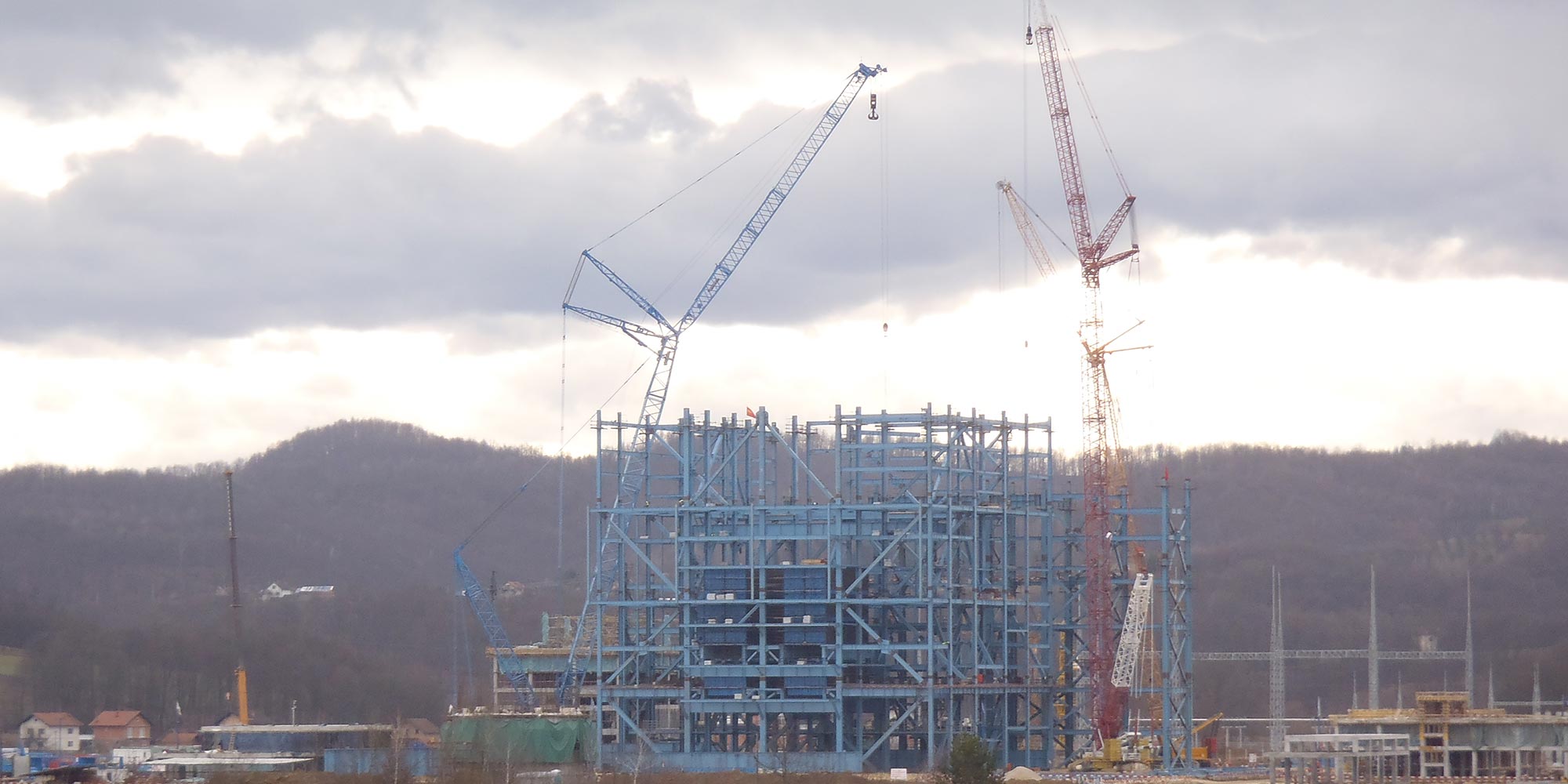Stanari lignite power plant, Bosnia and Herzegovina
EFT’s 300 MW Stanari power plant, constructed by China’s Dongfang, and financed by the China Development Bank, is located near Doboj in Bosnia-Herzegovina, in the Republika Srpska part of the country.

Stanari power plant under construction in early 2014
Stay informed
We closely follow international public finance and bring critical updates from the ground.
Background
Originally Stanari was planned to be a 420 MW plant but this was considered to be on the edge of economic viability and the capacity was reduced to 300 MW.
The plant officially started commercial operations in September 2016, but was already out of date in terms of environmental standards. Its environmental permit stipulates compliance only with the older EU Large Combustion Plants (LCP) Directive, not with the newer Industrial Emissions Directive.
During the project’s development a number of problems were raised, including the following:
No environmental impact assessment for the changed project
The environmental impact assessment process was carried out only for the original, larger version of the project and the Republika Srpska authorities did not require a new process for the new, smaller plant.
While it may appear that a smaller plant has a smaller environmental impact and therefore does not need a new study, several other changes were involved that could alter the situation:
- The project was originally planned to have a net thermal efficiency of 43 percent but the new version is down to 34.1 per cent.
- It was changed from supercritical pulverised lignite technology to subcritical circulating fluidised bed combustion.
- The cooling technology has also been changed from a wet to a dry cooling system. This is one of the main reasons for the loss of thermal efficiency.
Al Jazeera’s Dragan Stanimirović reports, the Stanari project is causing mixed reactions from local residents and concern to environmental groups about health impacts and CO2 emissions.
(Not available in English)
Environmental permit not compliant with pollution standards
Since 2006, Bosnia-Herzegovina has been a party to the Energy Community Treaty, which requires all members to abide by certain EU legislation in the energy sector.
This meant that while developing the Stanari project, Bosnia-Herzegovina was obliged to adhere to the EU Large Combustion Plants Directive, which regulates emissions limit values from power plants. Originally, the Republika Srpska authorities did not include the emissions limit values from the LCP Directive in Stanari’s environmental permit, but rather much laxer standards from domestic legislation with emissions 2-3 times higher.
In January 2014, an official complaint was submitted to the Energy Community Secretariat by the Center for Environment from Banja Luka and in July 2015 it was announced that the Stanari environmental permit would be updated following changes in the Republika Srpska legislation. Nevertheless, this still puts Stanari several years behind EU legislation.
Latest news
Alarmantne vrijednosti čestica prašine u Stanarima
Bankwatch in the media | 17 September, 2019Rezultati nezavisnog mjerenja kvaliteta zraka u Stanarima od jula ove godine pokazuju alarmantne satne vrijednosti štetnih čestica prašine u zraku koji dolaze iz neposredne blizine rudnika i termoelektrane, zaključak je izvještaja organizacije CEE Bankwatch rađenog u partnerstvu sa Centrom za životnu sredinu.
Read morePrisoners of coal
Blog entry | 6 September, 2019The Stanari coal-fired power plant, which started operating in September 2016, its ash disposal site, and the already-existing open-cast lignite mine have formed a curve around the north and east of the village. Now the locals in Stanari are regularly affected by pollution from different directions. The ones we spoke to, who live closest to the mine, claim that their health is deteriorating, their agricultural land is becoming useless and their homes are losing their value as the mine is devouring the nearby hills.
Read moreBalkan governments unprepared for new EU pollution rules
Blog entry | 17 August, 2017New EU rules entering into force today, to limit pollution from power plants, will also apply in most Western Balkan countries. But the region’s governments are so far acting like they don’t exist.
Read moreRelated publications
Western Balkan coal power plants polluted twice as much as those in the EU in 2019
Briefing | 12 July, 2021 | Download PDFThe non-compliance of Western Balkan coal power plants with the emission limits enshrined in the Energy Community Treaty is reflected in the region’s high sulphur dioxide (SO2), nitrogen oxides (NOX) and dust emissions. This briefing looks mainly at th
The great coal jobs fraud (2018 UPDATE)
Study | 28 June, 2018 |This study, an update of our November 2016 analysis, examines the claims and finds that in almost all cases, they are exaggerated. In fact, even the current levels of employment cannot be maintained and some companies such as Elektroprivreda Srbije and
Planned coal power plants in the Western Balkans versus EU pollution standards
Study | 14 June, 2017 | Download PDFThe new reference document on Best Available Techniques for Large Combustion Plants (LCP BREF) and its implications for new coal. Available languages: ENG – download pdf BiH – Planirane termoelektrane na ugalj u zemljama Zapadnog Balkana nasuprot stand
